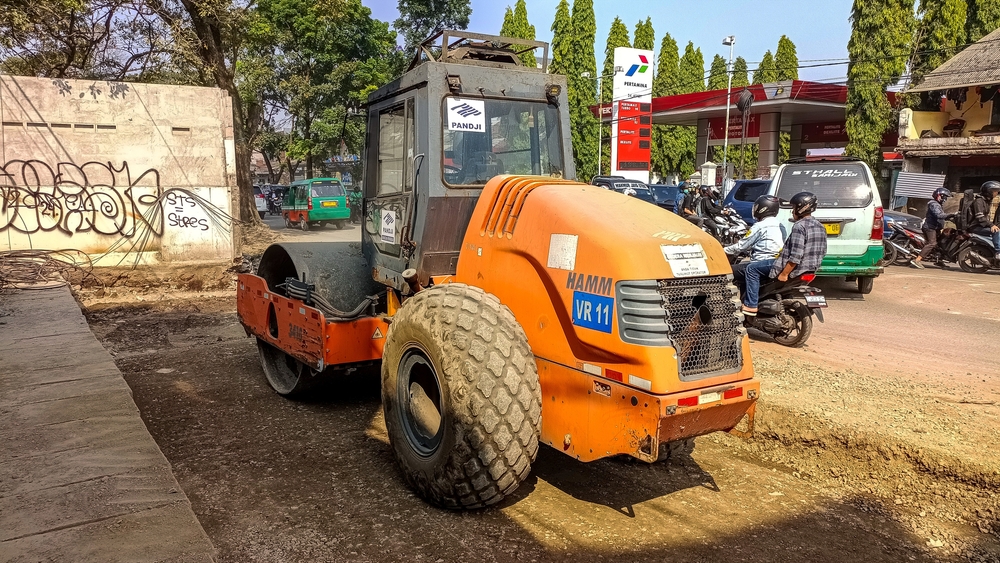Boom lifts play a crucial role in various industrial settings, providing the necessary height and reach to perform tasks that would otherwise be difficult or impossible.
As versatile pieces of equipment, they are indispensable in construction, maintenance, and repair jobs. However, the efficient and safe use of boom lifts is paramount to prevent accidents and ensure the smooth operation of projects.
Understanding what a boom lift is used for, and adhering to safety protocols, can significantly enhance productivity and safety in the workplace.
What are Boom Lifts?
Boom lifts, also known as cherry pickers, are aerial work platforms that allow workers to reach high places with ease.
These versatile machines are crucial in many industrial and construction settings due to their ability to safely elevate workers and materials to significant heights. There are several types of boom lifts, each designed to meet specific needs:
Articulating Boom Lifts
These lifts have multiple sections that “articulate,” or bend, allowing for versatile movement around obstacles and precise positioning.
This flexibility makes them ideal for tasks that require access to hard-to-reach areas, such as working around trees, buildings, or other obstructions.
Articulating boom lifts are often used in urban environments, maintenance tasks, and complex construction sites where maneuverability is crucial.
Telescopic Boom Lifts
Also known as stick booms or straight booms, these lifts extend straight out and offer greater horizontal reach, making them ideal for tasks that require significant reach over tall structures.
Telescopic boom lifts provide excellent stability and are perfect for jobs that require access to high, vertical structures like bridges, tall buildings, and communication towers. Their extended reach capability makes them invaluable in large-scale construction projects and industrial maintenance.
Key components of boom lifts include:
Platform (or Basket): The work area where the operator and any tools or materials are placed. The platform is designed with safety features like guardrails and a harness attachment point to ensure the safety of the worker.
Hydraulic Arm: This extends and retracts to adjust the height and reach of the lift. The hydraulic system provides smooth and controlled movement, allowing precise positioning of the platform.
Base: The stable foundation that supports the entire lift. The base typically includes outriggers or stabilizers to ensure stability on various terrains and prevent tipping.
Uses of Boom Lifts in Industrial Jobs
Boom lifts are widely used across various sectors, including:
1. Construction
Boom lifts are indispensable for tasks such as installing windows, painting, and conducting inspections on high-rise buildings. They allow workers to reach and work on exterior facades, rooftops, and other elevated areas with ease. The ability to precisely position the platform makes boom lifts ideal for detailed construction work that requires access to specific points at different heights.
2. Maintenance
These lifts are ideal for tasks such as cleaning, repairing, and inspecting buildings and structures. For example, facility maintenance teams use boom lifts to change lights, clean gutters, and inspect roofs. In industrial plants, boom lifts are used to maintain and repair machinery located at significant heights, ensuring smooth operation and safety.
3. Repairs
Boom lifts enable workers to perform repairs on roofs, signs, and other elevated structures. They are particularly useful for emergency repairs where quick and safe access to high places is necessary. Utility companies use boom lifts to repair power lines, while signage companies use them to install and maintain large outdoor signs and billboards.
Specific industries that commonly use boom lifts include construction, telecommunications, and utility services.
For example, a telecommunications company might use a boom lift to install and repair antennas on tall towers, ensuring reliable communication services. Utility companies rely on boom lifts for maintaining electrical and telecommunication infrastructure, while construction companies use them to build and maintain high-rise structures.
Importance of Safety Protocols
Operating a boom lift requires strict adherence to safety protocols to prevent accidents and injuries. Ensuring the safety of operators and nearby workers is paramount, and several key safety measures must be followed:
Training
Operators should receive comprehensive training on how to safely use and maneuver boom lifts. This includes understanding the equipment’s capabilities, limitations, and safety features.
Proper training ensures that operators can handle the lift safely and respond appropriately to any emergencies.
Equipment Checks
Regular inspections of the lift are necessary to ensure it is in good working condition. Before each use, operators should check for any mechanical issues, such as leaks in the hydraulic system, worn-out components, or malfunctioning controls.
Routine maintenance and inspections help prevent equipment failure and accidents.
Safety Gear
Use of appropriate personal protective equipment (PPE) such as harnesses and helmets is essential. Operators should be securely attached to the platform with a safety harness to prevent falls.
Additional PPE, like gloves and eye protection, should be worn based on the specific task and environment.
Environmental Awareness
Being aware of and adjusting to the surroundings, including wind speed, ground conditions, and overhead obstacles, is crucial.
Operators should assess the work area for potential hazards, such as uneven terrain, power lines, or strong winds that could affect the stability of the lift.
Proper planning and situational awareness help mitigate risks and ensure safe operation.
Benefits of Boom Lifts
Boom lifts offer numerous benefits that make them an invaluable asset in industrial jobs:
Increased Productivity
They allow workers to reach high places quickly and efficiently, reducing downtime. Boom lifts enable faster completion of tasks that would otherwise require scaffolding or ladders, leading to increased productivity and cost savings on labor.
Accessibility
Boom lifts can reach areas that are otherwise difficult to access, such as over obstacles or in confined spaces. Their flexibility and range of motion make them ideal for working in tight or complex environments where traditional access methods are impractical.
Safety
Boom lifts reduce the risks associated with working at heights and minimize manual labor injuries.
The safety features of boom lifts, such as guardrails and harness attachment points, protect workers from falls and other accidents, ensuring a safer working environment.
Conclusion
Boom lifts are vital tools in industrial jobs, offering unparalleled flexibility, efficiency, and safety. These machines enable workers to access high and hard-to-reach areas, making them indispensable in various tasks such as construction, maintenance, and repair.
Their ability to navigate obstacles and provide a stable platform significantly enhances productivity and reduces the time needed for tasks that would otherwise be challenging or hazardous. However, the full benefits of boom lifts can only be realized when they are used correctly and safely.
To maximize the advantages of boom lifts while minimizing risks, it is essential for workers to have a thorough understanding of what a boom lift is used for and to follow strict safety protocols.









